Try to picture this, you young whippersnappers: there was once an era in Hollywood’s long reign when superhero movies hardly ever came out. I’m talking…hardly ever. If you Google “1990s superhero movies,” you’ll see peculiar results like DARKMAN, ORGAZMO, (something called THE METEOR MAN), and even Jim Carrey’s THE MASK, but as far as pure, undistilled, “guy puts on costume and fights bad guy in costume” comic book originals, this era was a wasteland.
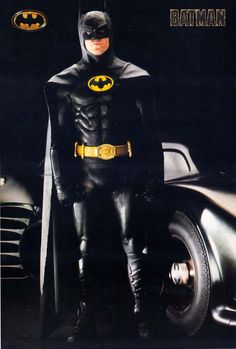
When 1989’s BATMAN came out, directed by Tim Burton, who at that time was fresh-faced and still worth a damn, it was an event. These days, that concept is a little hard to appreciate — especially in the superhero genre, since 800 fuckbillion superhero movies get released per year (a scientifically accurate figure, by the way). For perspective, once Matt Reeves’ THE BATMAN is released (assuming in 2020), we will have seen three different actors take on the role of Batman in a span of eight years. However, Michael Keaton took on the role after a 23-year span between theatrical endeavors – Adam West had been the previous Batman back during the days when BATMAN was a goofball property and featured a lot of dancing. Burton’s relaunch of BATMAN, which was designed to actually embody the character as presented in the comics, was the movie to see. And man…everyone did. I was five years old at that time, but I ended up in a theater watching it all unfold, even if I had no idea what was happening (and even though it was NOT appropriate for a five-year-old. It had skeletons!). During its initial theatrical release, it pulled in $412 million at the box office, which, in today’s monies, comes to $850 million. (By comparison, BATMAN BEGINS made $375 million upon release, adjusted to $491 million.) To this day, Batman is the iconic superhero of the landscape, for many different reasons: because of the very varied ways he’s been brought successfully to the big and small screen, because of Christopher Nolan’s mind-bogglingly successful DARK KNIGHT trilogy (the terrible DARK KNIGHT RISES notwithstanding), and because Batman simply is the face of the superhero movement.
It’s said that every generation who experiences decade-spanning franchises have their own version of a character, depending on which actor it was who brought that character to life. I exist in a sort of no-man’s land of broken rules in that regard. My James Bond is Daniel Craig, but my Batman, despite Christian Bale having taken on the role during the same era when Craig was running across rooftops and sweating profusely, will always be Michael Keaton (with a hat tip toward voice actor Kevin Conroy re: BATMAN: THE ANIMATED SERIES). Also, in spite of the radical evolution that technology and special effects have undergone in cinema over the last 30 years, as well as an adhering to the gritty and super-serious, Burton’s BATMAN, in my eyes, is the quintessential way to present that character – dark, yes, but not gritty, and not super-serious. (I’ll forgive the Prince soundtrack. Meddlin’ studios gonna meddle.) As for the actual production, the use of models and miniatures, stop motion effects, gigantic matte paintings, and drawn-on visual effects were the kinds of rudimentary tricks that channeled that kind of raw imagination tantamount to pitting Batman figures against Joker figures as a child. It reinforces the notion that we’re existing in a pure fantasyland. Maybe, in a move almost foretelling Nolan’s ultra-realistic take, Burton seemed to say, “Let’s not take this so seriously.” (When the Joker removes a handgun from his pants with a barrel longer than an elephant gun, you…kinda get that impression — a far cry from Nolan’s Joker shooting a cop point blank with a shotgun as the soundtrack whines at you.) And lordy, that score by Danny Elfman is one of the best of all time; except for Indiana Jones or the aforementioned James Bond, I can’t think of a character who has a better theme song. It even carried over to BATMAN: THE ANIMATED SERIES, which premiered on television between BATMAN RETURNS and BATMAN FOREVER. (When a movie can give you chills, but all that’s happening is the Batmobile driving through a leaf-strewn road at night, you’ll know that’s the power of a tremendous musical score.)
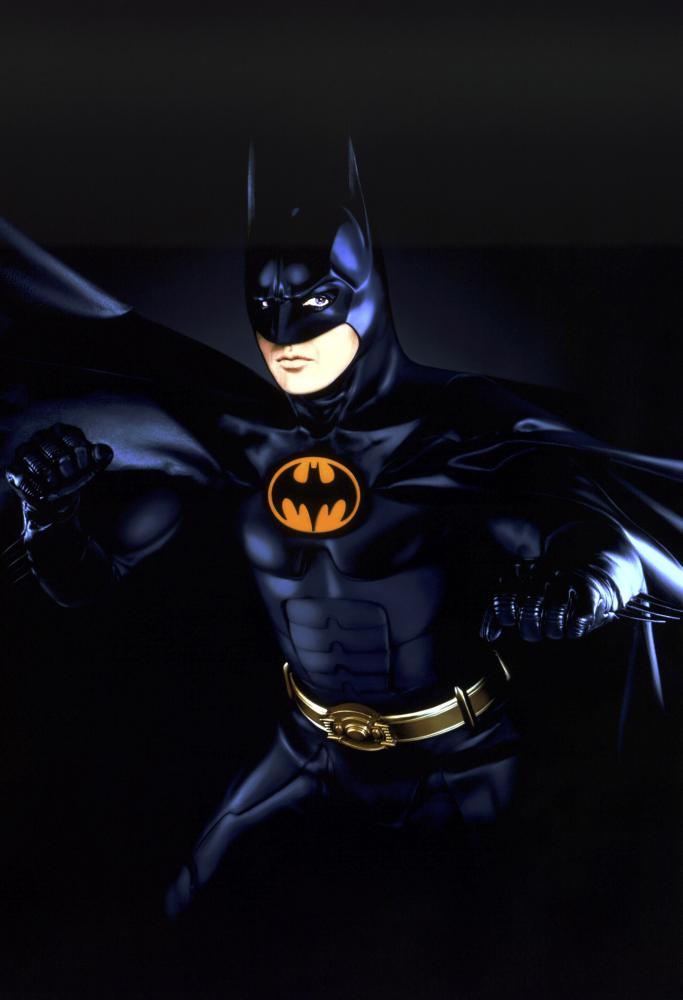
As for Batman himself, this is a dark character, and though Nolan tried profusely, he could never quite resurrect that darkness, instead relying on depressing melancholy. Though he deserves the accolades for trying to plant the character in as realistic a setting as possible, asking and answering the question, “What would Batman and Gotham City look like if they were real?,” his trilogy never managed to tap into the same kind of gothic darkness that embodied that character and that fictional city. And then we have Burton’s marriage of time — cars and fashions suggest a 1930s aesthetic, yet the setting is evidently present day, due to the presence of modern devices like televisions and boom boxes (along with contradicting cars and fashions). Burton’s BATMAN not only exists in its own fictional city, but in its own fictional time period.
Largely inspired by the writing of H.P. Lovecraft, tropes of film noir, and gothic features from the 1920s and ‘30s, Burton’s BATMAN is a wonderland of moviemaking. And there’s a reason why so many of its scenes have become iconic, the best being the scene with a recently-transformed Jack Napier (Jack Nicholson) glimpsing his new face in the mirror and laughing, creepily and unhinged, as he stumbles out of a basement surgical room. In a PG-13 superhero movie, it’s still one of the scariest fucking scenes ever committed to film.
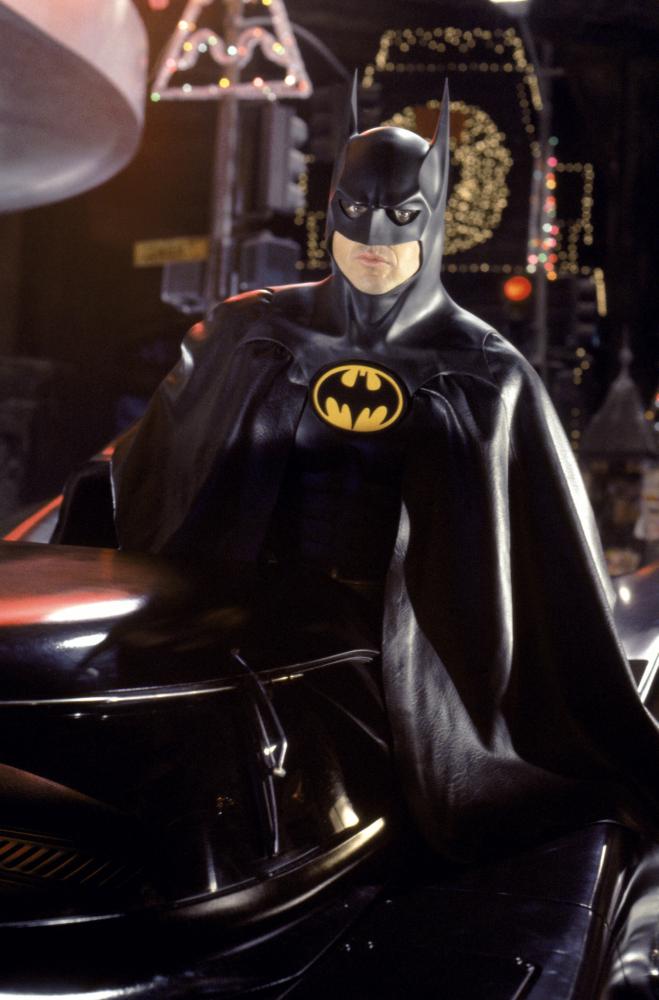
BATMAN RETURNS, Michael Keaton, 1992. ©Warner Bros.
Burton not only wasn’t fazed by some of the criticism levied his way regarding the previous film’s gothic darkness and despair, he seemed to be driven by the 2010s’ anachronism of “hold my beer,” dialing up that same darkness and despair into his masterpiece BATMAN RETURNS. Keaton returns, and joining him are Michelle Pfeiffer and Danny DeVito’s still-ultimate takes on Catwoman and the Penguin, respectively. For a film that opens with a baby being thrown in a river in the dead of snowy winter (by father Paul Reubens!), Burton was once again saying, “Hang on – you’re not off the hook yet.” It also boasts Burton’s love for classic horror, naming one of his villains Max Schreck (Christopher Walken), the actor who played Count Orlok in 1922’s NOSFERATU. (Future Leatherface and dog-hoarder Andrew Bryniarski plays his son). Burton also plays Selena Kyle’s transformation scene very subtly eerie: after Schreck throws her from her apartment window and she splats onto the snow-covered ground, she appears quite dead…and then a pack of stray cats come by and begin nibbling on her body, chewing hard enough on her fingers to draw blood. Was she simply stunned from the fall and awakes from the tiny teeth gnawing on her flesh, or did her spirit animals literally bring her back to life? Either way is equally acceptable in Burton’s world (although this would make his version of Catwoman the first ever zombie superhero).
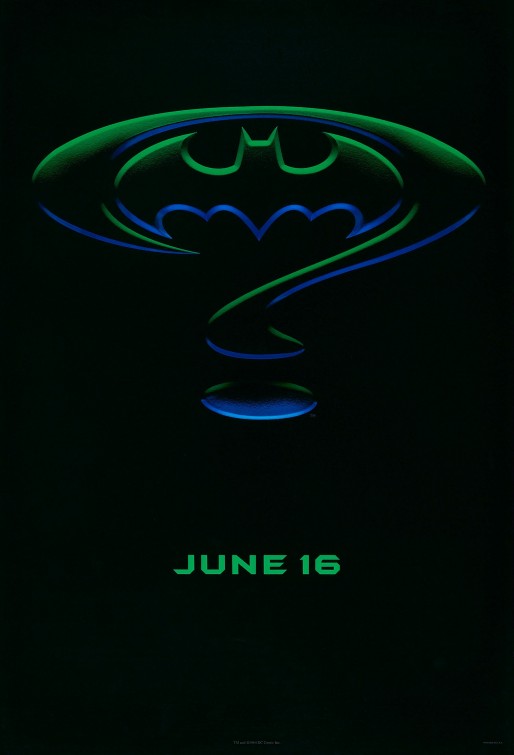
Following Burton’s departure from the series after his bow of BATMAN RETURNS, the remaining two installments fell under the tutelage of markedly different filmmaker Joel Schumacher, who dabbled in equally dark but less flamboyant features and had just enjoyed some critical raves for his first John Grisham adaptation, THE CLIENT. For those even vaguely aware of the trajectory of the BATMAN series, most are aware that this is where the first dip in quality manifests. Almost everything about BATMAN FOREVER feels very different from what’s come before: Val Kilmer takes over for Keaton, gone is the bleached art deco and replaced with overbearing neon, and the villains (Tommy Lee Jones, replacing Billy Dee Williams, and Jim Carrey as Two-Face and the Riddler, respectively) are severely over the top. Even the composer is different, with Elliot Goldenthal taking over for Elfman. On paper, casting Kilmer as the new Batman was a great idea; the actor had just come off the successful TOMBSTONE where he drew raves for his performance as Doc Holiday — a character with mythical proportions whom one could argue was the superhero of the Wild West. Perhaps under a different director, Kilmer might have offered a different performance, but under Schumacher, who doesn’t seem suited for mega-budgeted productions, his performance seems somehow both antsy and flat. Nicole Kidman, who plays the terribly-named Chase Meridian (seriously?) seems to be along for the ride, going through the motions while seemingly knowing she doesn’t belong in this kind of big budget nonsense. (That she follows up on Michelle Pfeiffer doesn’t do her any favors.)
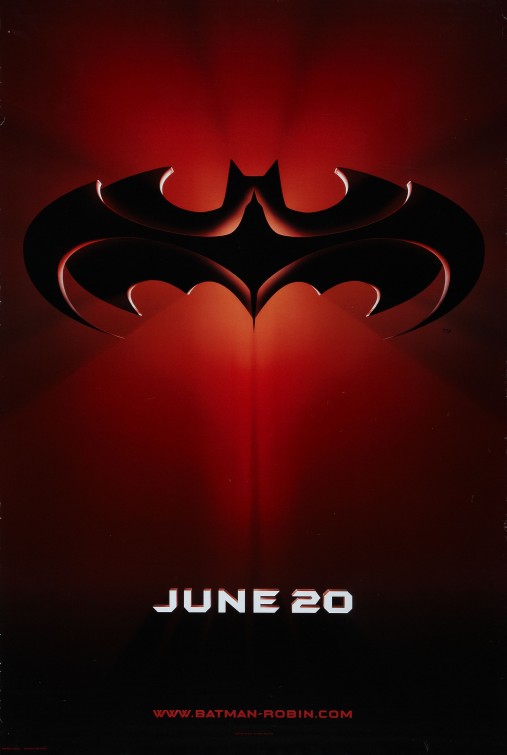
Capping off the BATMAN quadrilogy is BATMAN & ROBIN, easily the worst of the series, and the second entry in which the actor playing the villain receives top billing over the actor playing the titular hero (after Jack Nicholson’s trumping of Michael Keaton’s credit). Everything about this production seems to confirm what Schumacher has never missed a chance to disclose in the years following the sequel’s release: the studio was more interested in marketing a new line of glowing, neon Batman toys than making a coherent, actually good feature. And it shows. After the studio balked at Kilmer’s demands for an increase in salary, he was shown the door, and in entered George Clooney, who at that point was pretty much known for ER and a handful of movies no one saw. Clooney has the dubious honor of having played the worst Batman to date, somehow ruining a character’s mystique and tragic aura more than Adam West ever did, and it’s not because he appears in the worst-yet BATMAN film, but because you can see he’s totally in it for the money and exposure. As for the final product, there’s nothing I can say about it that hasn’t already been said: it’s a dreadful, garish, immature film that has “paycheck” written all over it from everyone involved. Once Batman pulls out his own Batman credit card (which has an expiration date of FOREVER), and your arch villain (played by an all-in Arnold Schwarzenegger) rattles off his 37th pun about cold or ice, you just know you’re existing in the wasteland of nonsensical, big-budget tripe that Hollywood thought audiences wanted at the time. (It features some solid pre-breakup Smashing Pumpkins tracks, however – written specifically for this goofball movie.)
Following BATMAN & ROBIN’s release, and its critical condemnation across the board, the studio wasn’t keen on rushing another into production, so the theatrical arm of the franchise was dead in the water until Christopher Nolan came along to revitalize it ten years later with 2005’s BATMAN BEGINS.
And the rest is history.
Warner Bros. debuts the entire ‘90s BATMAN collection on 4K UHD Blu-ray. Obviously, the results are stunning, and the new Dolby Atmos audio options really open up the world of Gotham City. (Elfman’s score sounds so lush.) Sadly, no new special features have been produced, but the press release boasts over seventeen hours of supplemental material rolled over from previous releases (and I can already hear the griping about the admittedly uninspired new cover art), but being that these flicks have already been well covered in the past, what matters most is their new 4K revamping. That, above all other things, is the major selling point, and it’s worth it for that aspect alone.
The past couple years have been great for Batman aficionados. A new standalone film, THE BATMAN, is gearing up for production from well-established filmmaker Matt Reeves (CLOVERFIELD, WAR FOR THE PLANET OF THE APES), BATMAN: THE ANIMATED SERIES enjoyed a complete, definitive Blu-ray release, and now we’ve got the original series that started it all making its 4K debut. Whoever your generation’s Batman is, it’s a pretty good time to be a fan in general.
The BATMAN 4K UHD Collection is now available in single units from Warner Bros., with a boxed set coming in September.
Tags: 4k, Adam West, Alicia Silverstone, Andrew Bryniarski, Batman, Bill Finger, Billy Dee Williams, Blu-ray, Bob Kane, Charles McKeown, Chris O'Donnell, Christian Bale, Christopher Walken, Daniel Waters, Danny DeVito, Danny Elfman, DC Comics, Debi Mazar, Dick Sprang, Don “The Dragon” Wilson, Drew Barrymore, Ed Begley Jr., Elle Macpherson, Elliot Goldenthal, George Clooney, H.P. Lovecraft, Jack Nicholson, Jack Palance, Jerry Hall, Jerry Robinson, Jim Carrey, Joel Schumacher, John Glover, Jonathan Gems, Kevin Conroy, Kim Basinger, matt reeves, Max Schreck, Michael Gough, Michael Keaton, Michael Murphy, Michelle Pfeiffer, Nicole Kidman, Pat Hingle, paul reubens, Prince, Robert Wuhl, Roger Pratt, Sam Hamm, Stefan Czapsky, Tim Burton, tommy lee jones, Tracey Walter, Uma Thurman, Val Kilmer, Vincent Schiavelli, Vivica A. Fox, Warren Skaaren, Wesley Strick, William Hootkins

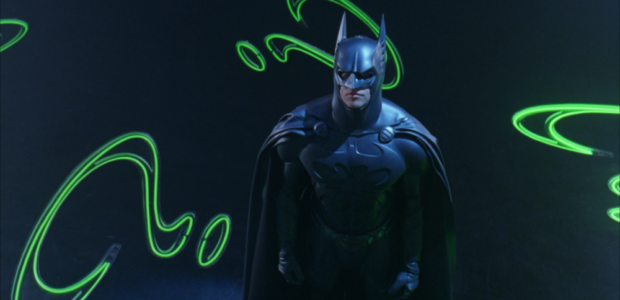
No Comments